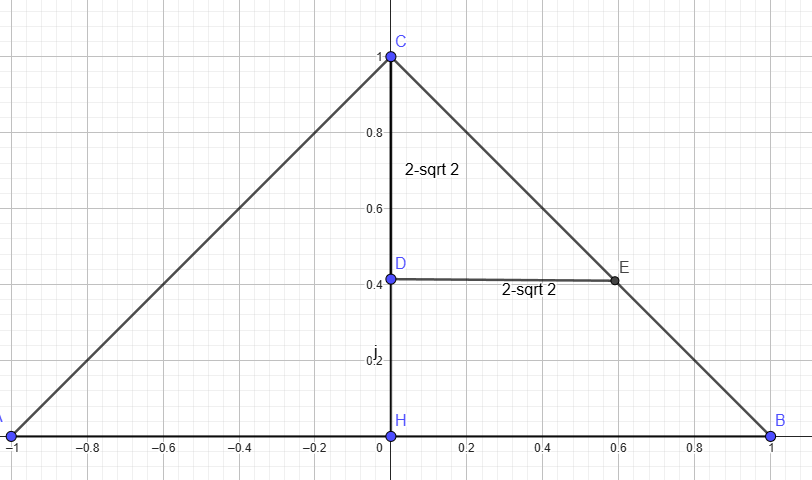See the following

Triangle CDE similar to triangle CHB
CH = HB
So CD = DE
The radius of the smaller cone, DE = its height, DC
Call these, x
Volume of smaller cone = (1/3) base^2 * height = (1/3) pi * x^3
Volume of frustum = pi (1-x) (1 + x^2 + x) / 3
Lateral Surface area of smallercone = pi * x * L
L = slant height of smaller cone = sqrt ( x^2 + x^2) = sqrt 2 * x
pi * x * sqrt (x^2 + x^2) = pi* sqrt 2 * x^2
Lateral surface area of large cone = pi * 1 * sqrt ( 1 + 1) = pi * 1 * sqrt (2) = pi* sqrt 2
Surface area of frustum = lateral surface area of large cone - lateral surface area of smaller cone plus area of base of large cone =
pi * sqrt 2 - pi sqrt 2 * x^2 = pi *sqrt 2 * (1 -x^2)
plus area of circular base = pi * 1^2 = pi
pi sqrt 2 * (1-x^2) + pi =
pi [sqrt 2 * ( 1 -x^2) + 1]
So we have the ratio of the volumes =
[ (1/3) pi * x^3] / [ pi(1-x) (x^2 + x + 1 )/3 ] = [ x^3 ]/ [ (1-x)(x^2 + x + 1)] = M
Ratio of surface areas =
[pi *sqrt 2 * x^2] / [ pi * sqrt 2 *(1-x^2) + pi] = [sqrt 2 * x^2 ] / [ sqrt2 * (1-x^2) + 1] = N
Set M = N and solve for x { let WolframAlpha do the heavy lifting here !! }
x= 2 -sqrt 2 = height of small cone
Height of A to Height of C = ( 2 - sqrt 2 ) / 1 = 2 -sqrt 2


